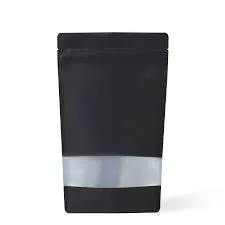- Afrikaans
- Albanian
- Amharic
- Arabic
- Armenian
- Azerbaijani
- Basque
- Belarusian
- Bengali
- Bosnian
- Bulgarian
- Catalan
- Cebuano
- chinese_simplified
- chinese_traditional
- Corsican
- Croatian
- Czech
- Danish
- Dutch
- English
- Esperanto
- Estonian
- Finnish
- French
- Frisian
- Galician
- Georgian
- German
- Greek
- Gujarati
- haitian_creole
- hausa
- hawaiian
- Hebrew
- Hindi
- Miao
- Hungarian
- Icelandic
- igbo
- Indonesian
- irish
- Italian
- Japanese
- Javanese
- Kannada
- kazakh
- Khmer
- Rwandese
- Korean
- Kurdish
- Kyrgyz
- Lao
- Latin
- Latvian
- Lithuanian
- Luxembourgish
- Macedonian
- Malgashi
- Malay
- Malayalam
- Maltese
- Maori
- Marathi
- Mongolian
- Myanmar
- Nepali
- Norwegian
- Norwegian
- Occitan
- Pashto
- Persian
- Polish
- Portuguese
- Punjabi
- Romanian
- Russian
- Samoan
- scottish-gaelic
- Serbian
- Sesotho
- Shona
- Sindhi
- Sinhala
- Slovak
- Slovenian
- Somali
- Spanish
- Sundanese
- Swahili
- Swedish
- Tagalog
- Tajik
- Tamil
- Tatar
- Telugu
- Thai
- Turkish
- Turkmen
- Ukrainian
- Urdu
- Uighur
- Uzbek
- Vietnamese
- Welsh
- Bantu
- Yiddish
- Yoruba
- Zulu
Creative Packaging Ideas for Alcoholic Beverages for Various Occasions
The Importance of Alcohol Packaging Understanding Alcohol Box Designs
In a world that thrives on aesthetics and functionality, the packaging of products plays a pivotal role, especially when it comes to beverages like alcohol. The design of alcohol boxes is not just about containing the product; it is a vital aspect of branding, consumer experience, and even regulation. This article explores the significance of alcohol packaging, focusing on the box designs that enhance both the appeal and protection of alcoholic beverages.
1. Visual Appeal and Brand Identity
First impressions matter, particularly in the competitive beverage market. Alcohol box designs serve as a brand's face, often being the first thing a consumer notices. Whether it's a striking whiskey box adorned with elegant typography or a vibrant, colorful case for a craft beer, the packaging must communicate the essence of the brand. Effective designs reflect the product's personality and influence consumer perception. For instance, luxury liquor brands often use premium materials and intricate designs to evoke feelings of exclusivity and sophistication, attracting consumers willing to spend more for a premium experience.
Moreover, compelling packaging can tell a story. Many alcohol boxes include details about the product's origin, the distillation process, or even the type of ingredients used. This narrative not only strengthens brand identity but also builds a connection with consumers, making them more likely to choose one product over another. Engaging visual designs, coupled with informative labels, create a memorable experience that impacts purchasing decisions.
2. Functionality and Protection
Beyond aesthetics, the primary function of an alcohol box is to protect the contents within. Alcohol, being sensitive to light and temperature, requires appropriate packaging to maintain its quality. For example, darker glass bottles and sturdy boxes can prevent premature aging and ensure that the flavor profile remains intact. Cardboard boxes are often designed to absorb shock, providing a layer of protection during transportation and storage, thus minimizing the risk of breakage.
The design should also facilitate ease of use. Features such as easy-open flaps, reinforced handles, or even bottle dividers within the box allow for convenient transportation. Additionally, innovative packaging can encourage consumers to reuse or recycle the box, aligning with modern sustainability trends. Enabling a user-friendly experience can significantly elevate customer satisfaction, driving loyalty toward a brand.
box for alcohol

3. Regulatory Compliance
In the alcohol industry, regulatory compliance is crucial. Different regions have specific labeling and packaging requirements to ensure consumer safety. Alcohol boxes must comply with local laws that dictate not only the information that must be displayed but also how it should be presented. This includes details such as alcohol content, health warnings, and legal disclaimers.
Moreover, child-resistant packaging is increasingly becoming a necessity for some alcoholic products, especially flavored spirits that may appeal to younger audiences. Designing boxes that meet these regulatory standards while still maintaining a visually appealing and functional design is a complex yet critical task for manufacturers.
4. Sustainability in Alcohol Packaging
As environmental concerns rise, consumers are increasingly seeking brands that align with their values. Sustainable packaging is emerging as a significant trend in the alcohol industry. Companies are exploring eco-friendly materials, such as recycled cardboard or biodegradable alternatives, to create their alcohol boxes. This not only appeals to environmentally conscious consumers but can also enhance brand loyalty and reputation.
Furthermore, brands that adopt sustainable practices often leverage this in their marketing, appealing to a demographic that values corporate responsibility. Sustainable alcohol packaging not only contributes to a better environment but also fosters a positive image for the brand.
Conclusion
In conclusion, the design of alcohol boxes encompasses a blend of visual appeal, functionality, regulatory compliance, and sustainability. This intricate combination creates an important marketing tool that can influence consumer behavior and support brand identity. As the alcohol market continues to evolve, the emphasis on innovative and responsible packaging will play a key role in shaping the future of the industry. By investing in thoughtful box designs, brands can not only protect their product but also create lasting connections with consumers, driving success in a competitive landscape.













